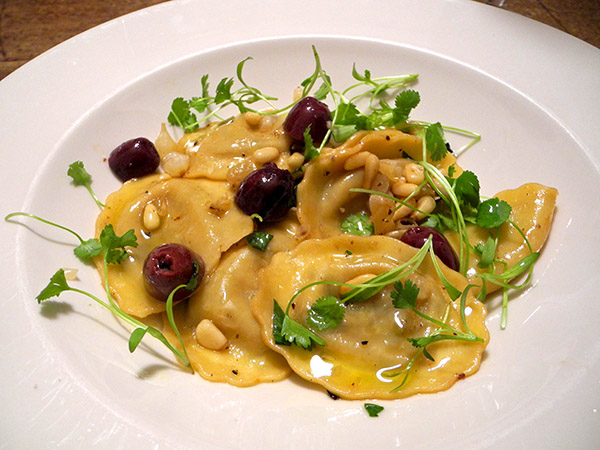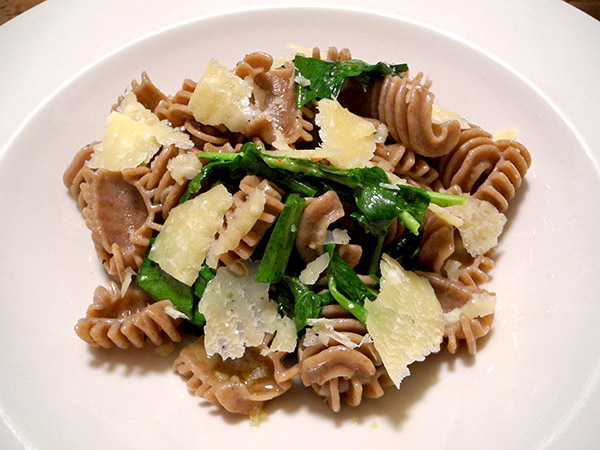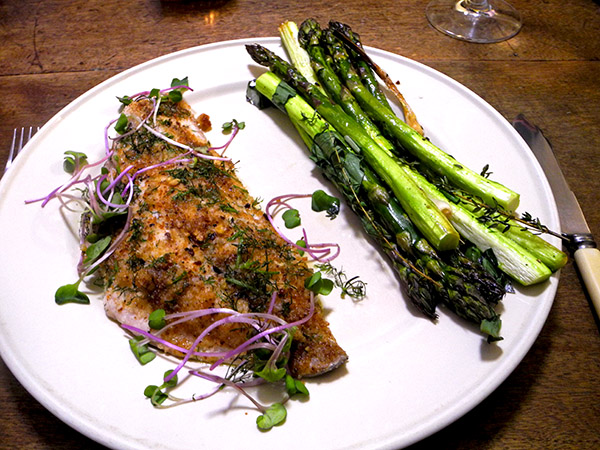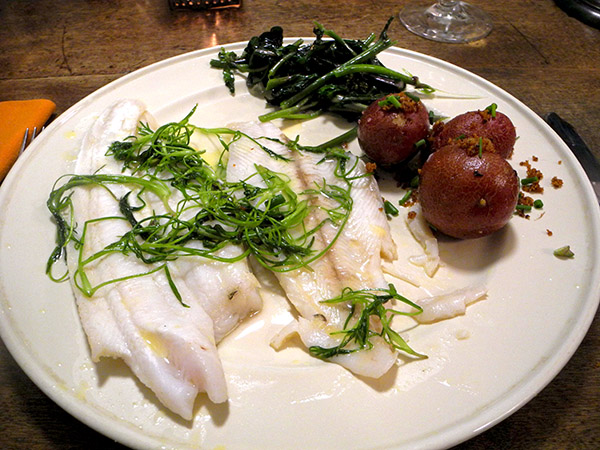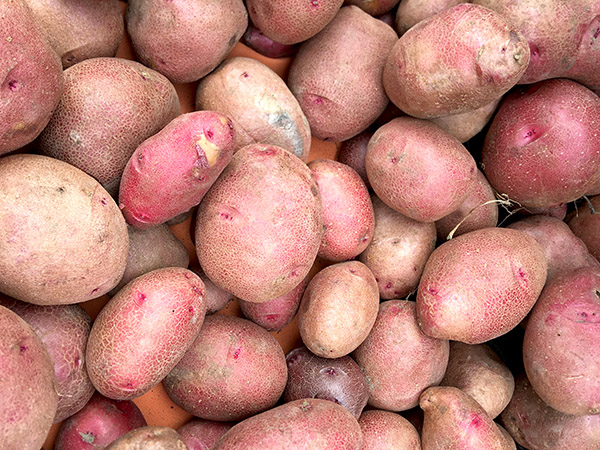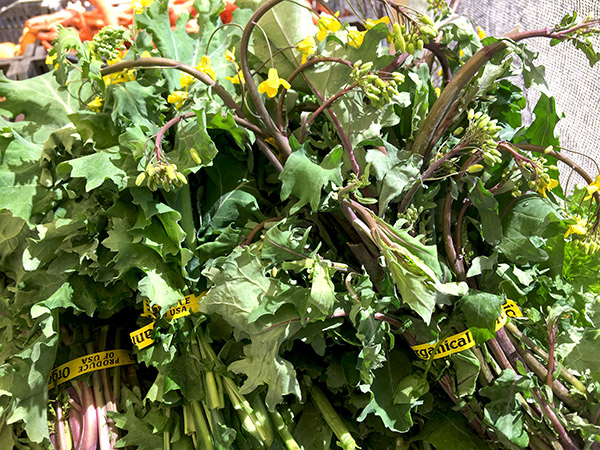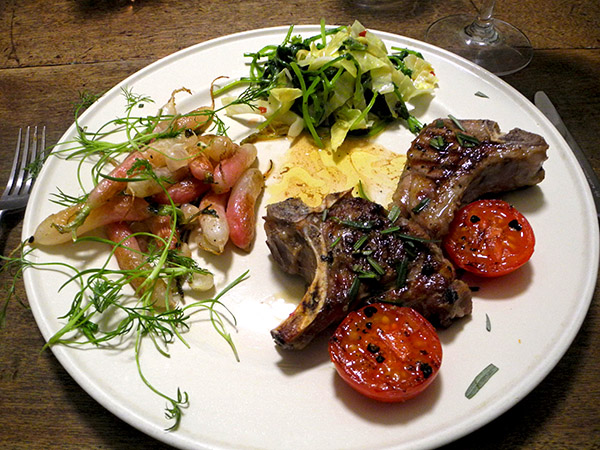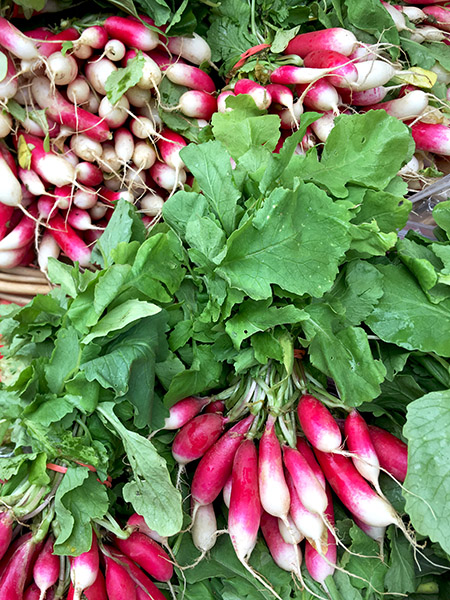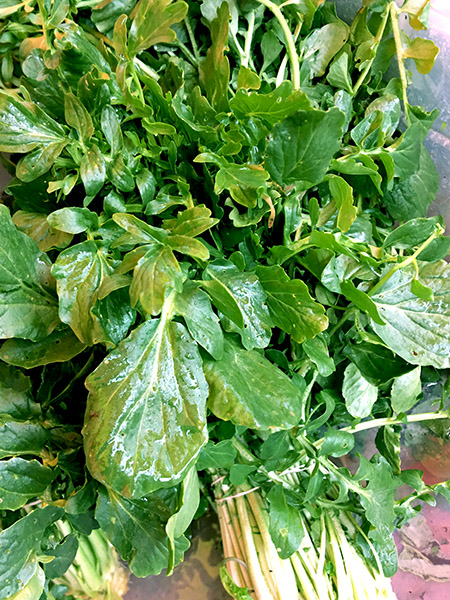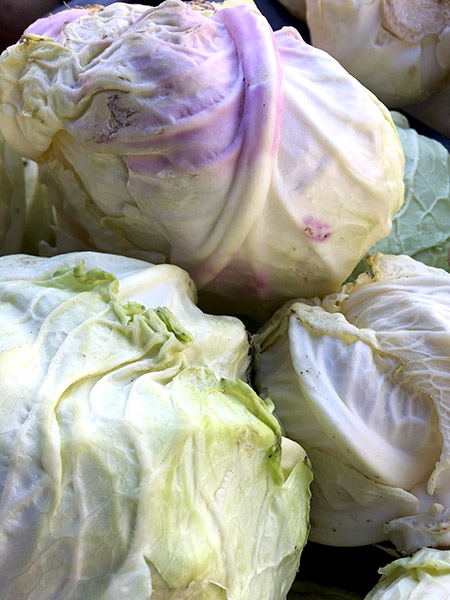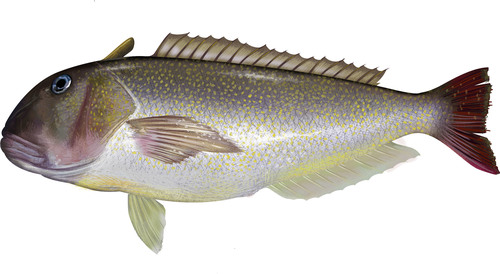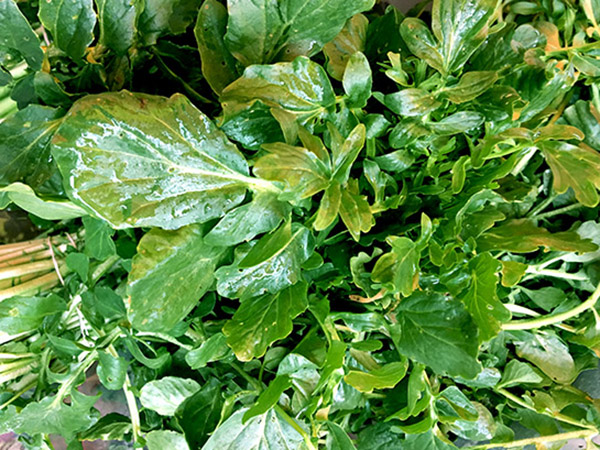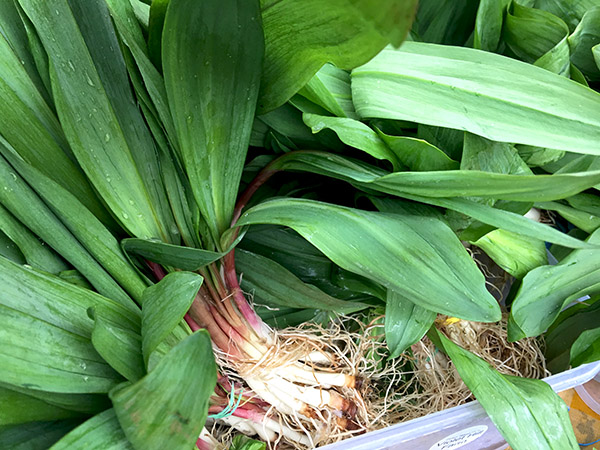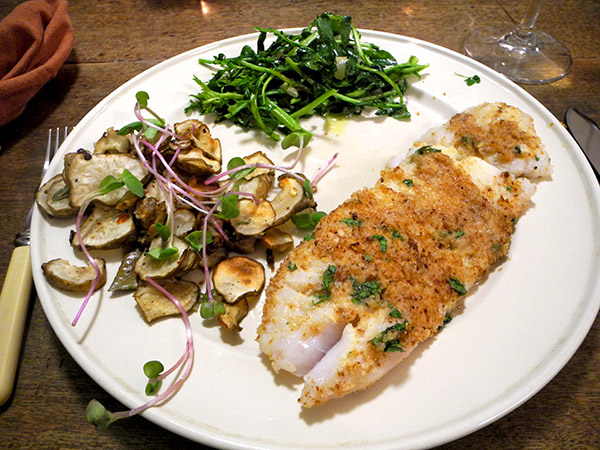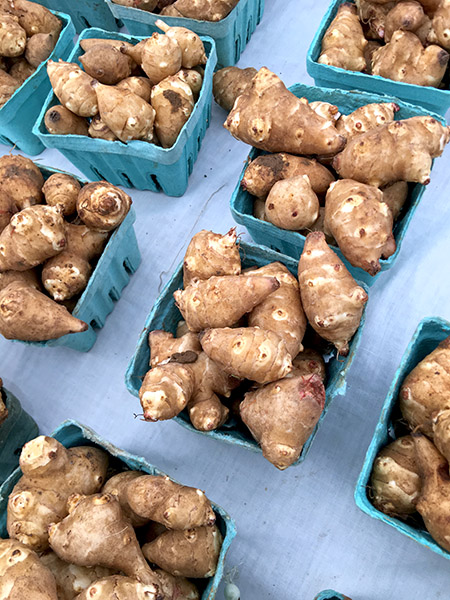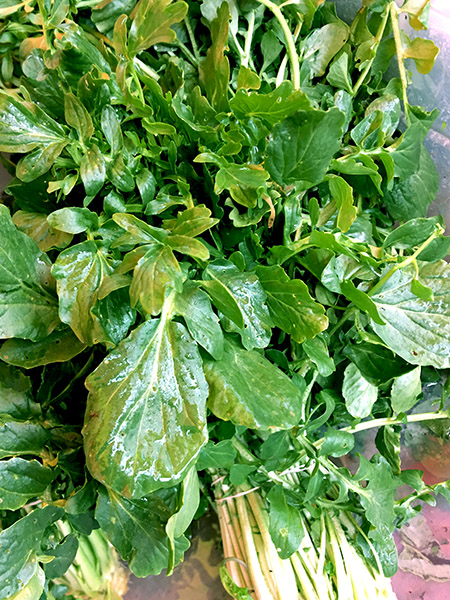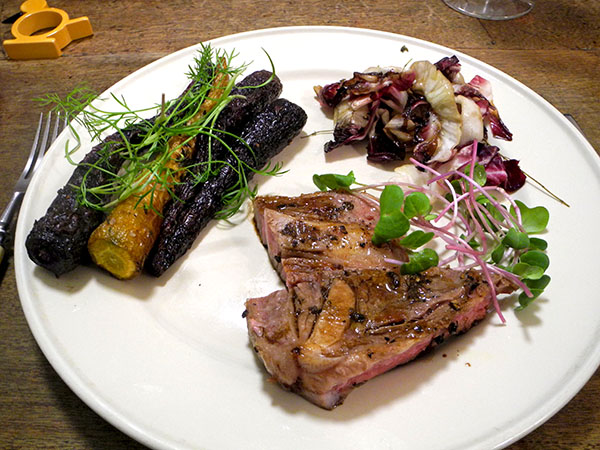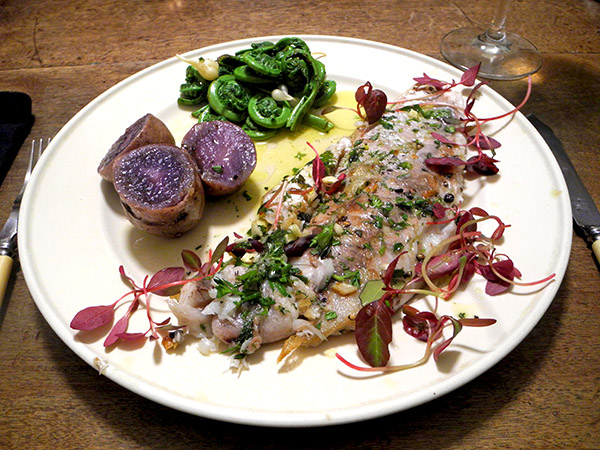
Squeteague (aka ‘Weakfish’ or Sea/Ocean Trout). I’ve written it before: We love this fish.
I seem to have prepared it 3 times, in 3 different sizes, in the first post calling it ‘Weakfish’ but eventually I tagged it Squeteague, mostly out of my fondness for coastal New England and its Narragansett heritage [Narragansett: pesukwiteag, meaning ‘they give glue’, because glue is made from them (or was)].
I had originally planned on accompanying the fillets with fiddleheads alone, but when I had spread the furled fronds on the counter, I realized there really weren’t enough of them for that major role, and I reached for the basket where I had been storing some blue potatoes for over a month.
The first picture is of some of the fishmonger’s buckets, as I found them in the Greenmarket, under a scuffed plexi lid, showing, clockwise from the top left, cod, scallops, mackerel, and Squeteague.

The second shot is of some of the farmer’s foraged fiddleheads.
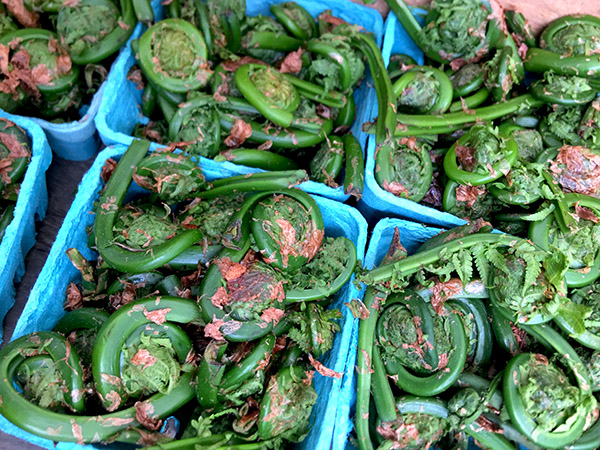
The third, of the blue potatoes, may look familiar: I’ve used the same shot before. I picked up the tubers at the Greenmarket on March 31, and I included a majority of them in the meal I prepared that night.

- two 8-ounce fillets of Squeteague (aka ‘Weakfish’ or Sea/Ocean Trout) from Blue Moon Fish Company, marinated for about half an hour on the counter in a mix of a little olive oil, one minced garlic clove from Lucky Dog Organic Farm, and 11 different herbs (yeah, I went overboard, especially just one would have actually been enough), including one large crushed fresh bay leaf from West Side Market, rosemary, chives, and oregano from Stokes Farm, sage from S. & S.O. Produce Farm, parsley from Norwich Meadows farm, mint from Phillips Farm, thyme from Eataly, lovage and cilantro from Windfall Farms, dill from Bodhitree Farm, after which the fillets were drained, sautéed or fried for about 2 minutes inside a lightly-oiled (one tablespoon), tin-lined heavy oval copper pan which had been pre-heated to medium-hot, skin-slide down first, then turned and cooked for another minute, arranged on the plates, the juices drizzled on top, garnished with micro red amaranth from Windfall Farms [I had originally intended to put the amaranth on the potatoes, but I realized at the last moment that they might almost disappear in their blue-purple hue)
- three ‘blue potatoes’ from Norwich Meadows Farm, boiled boiled in well-salted water, drained, dried in the still-warm vintage Pyrex glass pot, rolled in a little olive oil, seasoned with sea salt and freshly-ground Tellicherry pepper
- one small basket of fiddlehead ferns from Tamarack Hollow Farm, blanched for 3 or 4 minutes, drained, dried, briefly sautéed with chopped wild garlic bulbs from Lani’s Farm that had already been warmed, and some chopped thyme from Eataly, finished with a squeeze of juice from a sweet local lemon form Fantastic Gardens of Long Island
- the wine was a French (Loire) white, Domaine Vincent Giraudon Primavera Côte Roannaise 2015, from Chelsea Wine Vault
- the music was the album, ‘1700 – The Century of the Portuguese‘ (we are going to be in Portugal and Galicia in late may and early June, and had just finished watching
